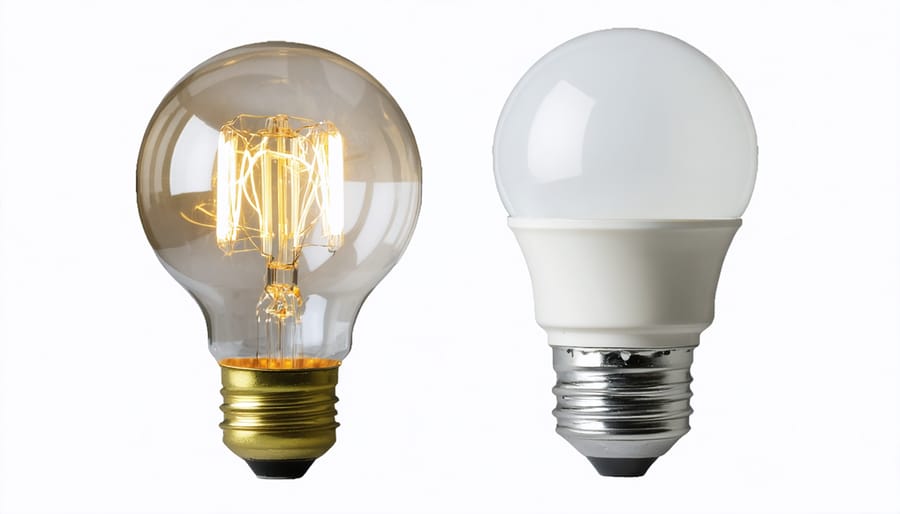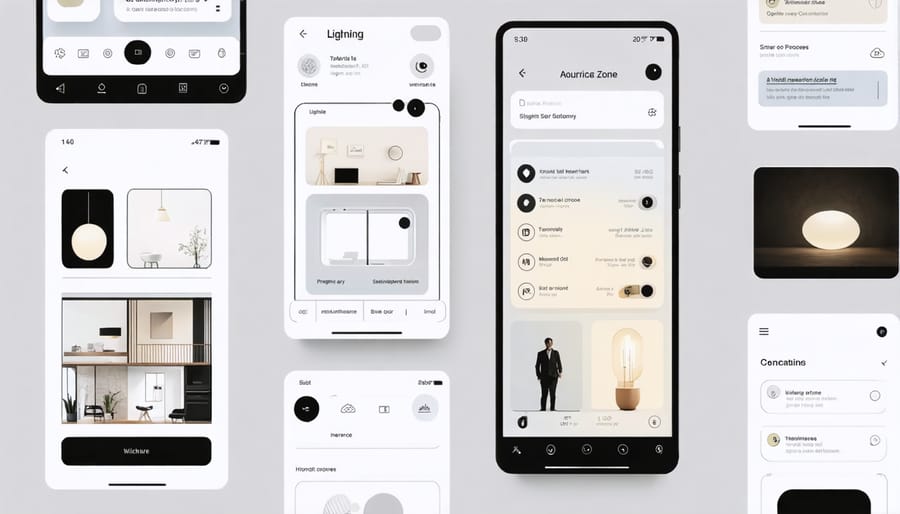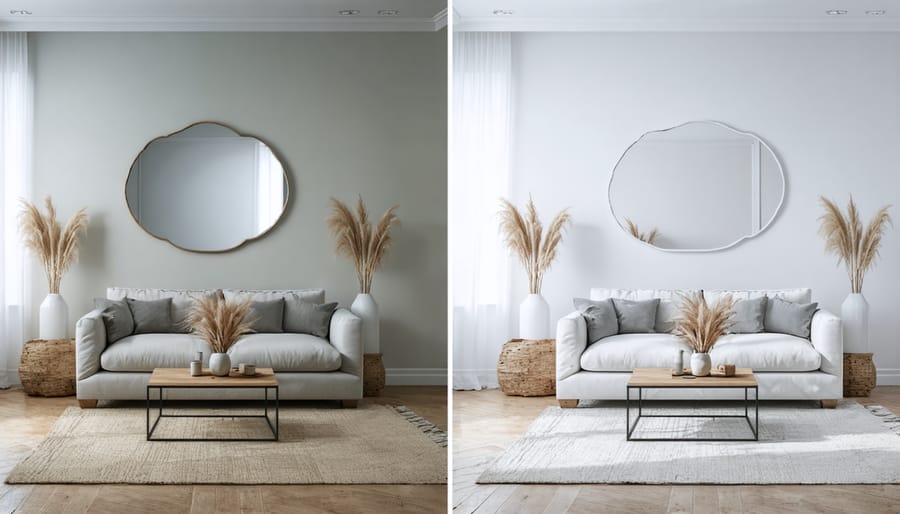Transform your daily routine into a powerful force for environmental change through simple, impactful choices. From your morning coffee to your evening wind-down, every decision presents an opportunity to reduce your carbon footprint and create lasting positive impact. The path to sustainability doesn’t require radical lifestyle changes or expensive investments – it starts with mindful choices in the comfort of your own home.
Making sustainable choices has never been more crucial, yet it’s also never been more achievable. Whether it’s switching to reusable containers, choosing energy-efficient appliances, or implementing a household recycling system, small actions compound into significant environmental benefits. These practical steps not only help protect our planet but often lead to substantial cost savings over time.
Your journey toward a more sustainable lifestyle begins with understanding that every action matters. By incorporating eco-friendly practices into your daily routine, you’ll join millions of others working to create a healthier planet for future generations. Let’s explore practical, budget-friendly ways to make your everyday life more sustainable, starting with changes you can implement today.
This introduction establishes authority while maintaining an encouraging, accessible tone, perfectly targeting environmentally conscious homeowners seeking practical solutions.
LED Lighting: The Bright Foundation of Sustainable Homes
Why LEDs Outshine Traditional Bulbs
When it comes to sustainable lighting choices, LEDs are the clear winners in today’s market. These innovative bulbs can cut your energy bills in half while delivering superior lighting quality. Unlike traditional incandescent bulbs that waste 90% of their energy as heat, LEDs convert nearly all their energy into light, making them incredibly efficient.
The numbers tell an impressive story: a typical LED bulb lasts up to 25,000 hours, compared to just 1,000 hours for a traditional bulb. This means you’ll replace your LED bulbs far less frequently, reducing both waste and maintenance hassles. While LEDs might cost a bit more upfront, they pay for themselves many times over through energy savings and longevity.
Consider this: replacing just five frequently used bulbs with LEDs can save you around $75 annually on your electricity bill. Plus, LEDs come in various color temperatures, from warm, cozy glows to bright, daylight-like illumination, giving you more control over your home’s ambiance.
They’re also more durable than traditional bulbs, containing no fragile filaments or hazardous materials, making them safer for your home and the environment. Making the switch to LEDs is a simple yet powerful step toward a more sustainable lifestyle.

Choosing the Right LED Bulbs
Selecting the right LED bulbs for your home doesn’t have to be complicated. Start by checking the lumens, not watts – this tells you how bright the bulb will be. For living spaces, aim for 800-1500 lumens, while kitchens and workspaces might need 2000-3000 lumens for optimal lighting.
Next, consider color temperature. Warm white (2700-3000K) creates a cozy atmosphere perfect for bedrooms and living rooms. Cool white (4000-5000K) works best in kitchens and home offices where you need focused lighting. For outdoor spaces, daylight bulbs (5000-6500K) provide excellent visibility.
Don’t forget to check the bulb’s base type and fixture compatibility. Most homes use E26 (standard) or E12 (candelabra) bases, but measure yours to be sure. Look for the ENERGY STAR label – these bulbs meet strict efficiency standards and often last longer.
Pro tip: Keep your receipt and packaging for the first few weeks. While LED bulbs last for years, manufacturing defects usually show up quickly. Many retailers offer hassle-free exchanges within 30-90 days. Also, consider dimmable LEDs for spaces where you want lighting flexibility, but verify compatibility with your existing dimmer switches.
Smart Controls for Smarter Energy Use
Motion Sensors and Timers
Motion sensors and timers are game-changers when it comes to managing your home’s lighting efficiently. These smart devices ensure lights are only on when needed, making them perfect for spaces like hallways, bathrooms, and outdoor areas where lights are often left on accidentally.
Installing motion sensors is simpler than you might think. Most modern sensors can be easily mounted in place of existing light switches, requiring just basic DIY skills. For outdoor lighting, consider photocell sensors that automatically activate at dusk and turn off at dawn, combining convenience with energy savings.
Smart timers take automation a step further by allowing you to create customized lighting schedules. Set your lights to turn on just before you arrive home from work, or program them to gradually dim in the evening as you wind down for bed. Many smart timers can be controlled through your smartphone, giving you the flexibility to adjust settings even when you’re away.
For maximum efficiency, place motion sensors in transitional spaces where people don’t linger long. Think laundry rooms, storage areas, and garages. In these spaces, you can set shorter activation times of 1-2 minutes. For living areas, longer durations of 5-15 minutes usually work better.
Pro tip: Look for sensors with adjustable sensitivity settings to prevent false triggers from pets or outdoor movement, ensuring your automated system works precisely as intended.
Smart Home Integration
Integrating your home’s lighting with modern smart home automation systems is a game-changer for sustainable living. These systems allow you to control your lights remotely, set schedules, and automatically adjust brightness based on natural light levels or occupancy.
Start by installing smart bulbs or switches in high-traffic areas like your living room and kitchen. Many systems let you create “scenes” – preset lighting configurations that activate with a single tap or voice command. For instance, set your lights to dim gradually in the evening, helping reduce energy use while maintaining comfort.
Motion sensors can automatically turn lights off in empty rooms, while daylight sensors adjust artificial lighting based on available natural light. This seamless automation ensures you’re only using the energy you need, when you need it.
Consider grouping your lights by zones or activities. Create an “away” mode that turns off all non-essential lighting when you leave home, or a “movie night” setting that dims specific lights for the perfect ambiance while saving energy.
The initial investment in smart lighting may seem significant, but the long-term benefits are worth it. Most users report 20-30% reduction in lighting-related energy costs, plus the added convenience of automated control makes sustainable living effortless.

Natural Light Maximization
Strategic Window Treatments
Strategic window treatments are your secret weapon in the battle for energy efficiency. By learning to maximize natural light efficiency, you can significantly reduce your reliance on artificial lighting and climate control systems.
Start by identifying your windows’ exposure to sunlight throughout the day. For south-facing windows, consider installing adjustable blinds or cellular shades that can be opened during winter days to capture warmth and closed during summer to prevent heat gain. Light-colored blinds reflect sunlight effectively, while darker shades absorb more heat.
Thermal curtains are another excellent investment, especially for older windows. These heavy-duty window coverings create an insulating barrier that keeps your home cooler in summer and warmer in winter. For the best results, hang them as close to the window as possible and let them extend beyond the frame on all sides.
Don’t forget about exterior solutions like awnings or solar screens. These can block up to 70% of solar heat before it enters your home, while still allowing natural light to filter through. For a budget-friendly option, consider applying heat-reducing window films, which can be easily installed as a weekend DIY project.
Reflective Surfaces and Light Colors
Maximizing natural light in your home isn’t just about having bigger windows – it’s about making smart design choices that help sunlight reach deeper into your living spaces. Start by incorporating reflective surfaces strategically throughout your home. Mirrors are your best friends here; place them opposite windows to bounce light further into rooms and create the illusion of more space.
Light-colored walls and ceilings act as natural light amplifiers. Consider painting your walls in soft whites, creams, or pale pastels. These colors don’t just reflect light better; they also create an airy, open feeling that can make rooms feel more spacious and welcoming. For an extra boost, opt for paint with a slight sheen rather than completely matte finishes.
Don’t forget about your furniture and decor choices. Light-colored or glossy furniture surfaces, metallic accents, and glass elements all help to reflect and distribute natural light throughout your space. Even small changes like switching to lighter curtains or adding a metallic picture frame can make a noticeable difference.
Pro tip: Place mirrors or reflective surfaces at angles where they’ll catch and redirect sunlight to darker corners of your rooms. This simple adjustment can significantly reduce your reliance on artificial lighting during daylight hours.

Maintenance for Maximum Efficiency
Regular Cleaning and Upkeep
Regular maintenance is key to ensuring your sustainable practices remain effective over time. Start by creating a weekly cleaning schedule for your appliances and fixtures – a simple wipe-down can prevent buildup that forces them to work harder and consume more energy. Pay special attention to air filters, vents, and radiators, as dust accumulation can reduce their efficiency by up to 25%.
For your lighting fixtures, dust bulbs and lampshades monthly to maintain optimal brightness. Clean windows regularly to maximize natural light and reduce the need for artificial lighting during daytime hours. Don’t forget about your outdoor spaces – keep solar panels clean and free from debris to ensure maximum energy absorption.
Check weather stripping around doors and windows seasonally, replacing worn-out pieces to prevent energy waste. Inspect and clean your home’s gutters twice yearly to maintain proper water flow and prevent damage that could compromise your home’s efficiency. Remember that well-maintained appliances and systems not only last longer but also operate more efficiently, reducing both your environmental impact and utility bills.
When to Upgrade or Replace
Knowing when to upgrade your lighting system is crucial for maintaining energy efficiency and reducing your environmental impact. A good rule of thumb is to replace traditional incandescent bulbs immediately – they’re energy hogs that belong in the past. For compact fluorescent lights (CFLs), consider upgrading when they start flickering or taking longer to reach full brightness, typically after 2-3 years of use.
LED fixtures should last 15-20 years with normal use, but don’t wait until they completely fail. If you notice significant dimming or color changes, it’s time for an upgrade. Also, if your LED bulbs are more than 5-7 years old, newer models likely offer better efficiency and features.
Watch for these key signs that signal it’s time to replace:
– Higher than usual electricity bills
– Inconsistent lighting levels
– Frequent bulb replacements
– Outdated dimmer switches struggling with LED loads
– Yellowing plastic components on fixtures
Remember, upgrading doesn’t always mean replacing everything at once. Start with the most frequently used fixtures to maximize your energy savings and environmental impact. Consider smart lighting systems during upgrades – they offer additional energy-saving features through automation and scheduling.
DIY Energy-Saving Projects
Ready to roll up your sleeves and make a real difference in your home’s energy efficiency? These DIY energy-saving projects are perfect for weekend warriors looking to reduce their carbon footprint and utility bills.
Start with draft-proofing your windows and doors using weatherstripping tape and door sweeps. This simple project takes just an hour but can reduce heating and cooling costs by up to 15%. For added insulation, create your own thermal curtains by adding a thermal liner to existing curtains – it’s as easy as basic sewing or using fabric adhesive tape.
Transform your water usage with a rainwater collection system using food-grade barrels and basic plumbing supplies. Connect it to your garden irrigation for free, sustainable watering. In your bathroom, install a dual-flush converter kit on your toilet – it’s a 30-minute project that can save thousands of gallons annually.
Create your own smart power strip station by combining a basic power strip with a timer. This helps eliminate phantom energy drain from electronics when they’re not in use. For better temperature control, build your own window reflectors using cardboard and aluminum foil, placing them behind radiators to redirect heat into your room instead of losing it through exterior walls.
In your garden, construct a simple compost bin using recycled wooden pallets. This provides free, nutrient-rich soil while reducing waste. Finally, upgrade your lighting by installing LED bulbs with motion sensors in less-frequently used areas – the sensors are easy to install and ensure lights aren’t left on unnecessarily.
Remember, these projects don’t require advanced DIY skills, just enthusiasm and basic tools. Start with one project this weekend and build your sustainable home one step at a time.
Living sustainably doesn’t have to be overwhelming or complicated. By incorporating these simple changes into your daily routine, you can make a meaningful impact on the environment while often saving money in the process. Start small by focusing on one or two changes that feel manageable, whether it’s switching to LED bulbs, starting a composting bin, or bringing reusable bags to the grocery store.
Remember that sustainability is a journey, not a destination. Each small step you take contributes to a larger positive impact. As you become comfortable with initial changes, gradually add more sustainable practices to your routine. Share your experiences with friends and family – you might inspire others to join you in making eco-friendly choices.
The key is consistency rather than perfection. Even if you can’t implement every suggestion, your efforts matter. By making mindful choices about energy use, water consumption, waste reduction, and daily purchases, you’re helping create a more sustainable future for generations to come. Start today with whatever feels most achievable, and watch how these small changes add up to make a significant difference.
